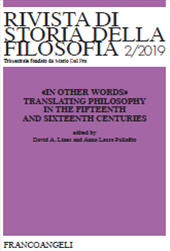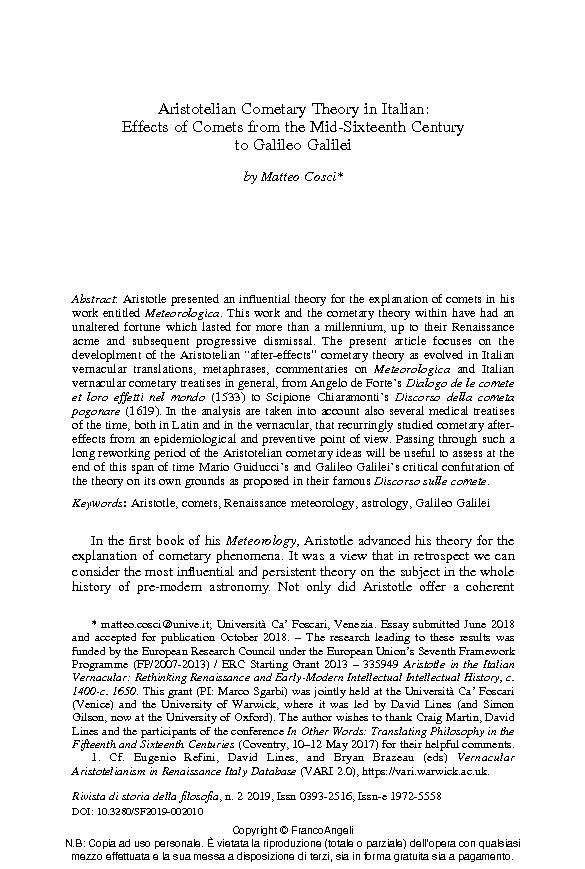Aristotelian Cometary Theory in Italian : Effects of Comets from the Mid-Sixteenth Century to Galileo Galilei
343-360 p.
Aristotle presented an influential theory for the explanation of comets in his work entitled Meteorologica. This work and the cometary theory within have had an unaltered fortune which lasted for more than a millennium, up to their Renaissance acme and subsequent progressive dismissal. The present article focuses on the developlment of the Aristotelian "after-effects" cometary theory as evolved in Italian vernacular translations, metaphrases, commentaries on Meteorologica and Italian vernacular cometary treatises in general, from Angelo de Forte's Dialogo de le comete et loro effetti nel mondo (1533) to Scipione Chiaramonti's Discorso della cometa pogonare (1619). In the analysis are taken into account also several medical treatises of the time, both in Latin and in the vernacular, that recurringly studied cometary aftereffects from an epidemiological and preventive point of view.
Passing through such a long reworking period of the Aristotelian cometary ideas will be useful to assess at the end of this span of time Mario Guiducci's and Galileo Galilei's critical confutation of the theory on its own grounds as proposed in their famous Discorso sulle comete. [Publisher's text]
-
Articles from the same issue (available individually)
-
Information
ISSN: 1972-5558



